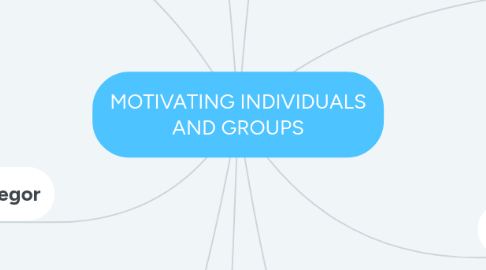
1. Meeting needs = job satisfaction + positive attitude to work
2. McGregor
2.1. Theory X
2.1.1. assumes that individuals have an inherent dislike for work and will avoid it if they can
2.2. Theory Y
2.2.1. asserts that work is as natural as play or rest
3. Rewards & incentives
3.1. Reward?
3.1.1. given in recognition of success
3.2. Intrinsic reward?
3.2.1. related to the job itself, eg loving being a nurse
3.3. Extrinsic reward?
3.3.1. outside the job, eg financial – you like the pay, or non-financial – you like the working hours
3.4. Incentive?
3.4.1. offer of a reward designed to motivate current and future performance
4. Sources of Motivation
4.1. Financial rewards
4.2. Job satisfaction
4.3. Participation in decision making
4.4. Job design
5. Pay as a motivator
5.1. Types of reward
5.1.1. Service contracts and termination payments
5.1.2. Basic wages
5.1.3. Overtime payments
5.1.4. Performance related bonus
5.1.5. Shares
5.1.6. Benefits in kind eg healthcare
5.1.7. Pension contributions
5.2. Benefits of Performance Related Pay (PRP)
5.2.1. Improves commitment and capability
5.2.2. Complements other HR initiatives
5.2.3. Improves focus on the business's performance objectives
5.2.4. Encourages two-way communication
5.2.5. Greater supervisory responsibility
5.2.6. It recognises achievement when other means are not available
6. Process theories
6.1. HOW can people be motivated?
6.1.1. VROOM
6.1.1.1. Expectancy Theory
6.1.1.2. VALENCE x EXPECTANCY = FORCE
7. content theories
7.1. WHAT motivates people?
7.1.1. MASLOW
7.1.1.1. HIERARCHY OF NEEDS
7.1.2. HERZBERG
7.1.2.1. TWO FACTOR THEORIES
7.1.2.2. Motivation can be increased by :
7.1.2.2.1. Job enlargement
7.1.2.2.2. Job rotation
7.1.2.2.3. Job enrichment
